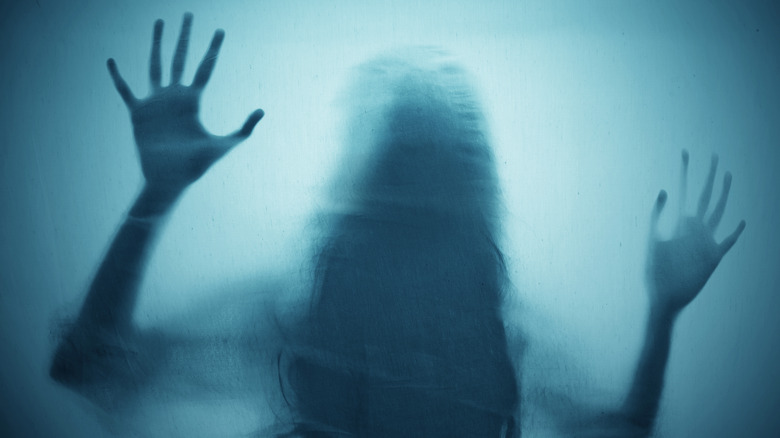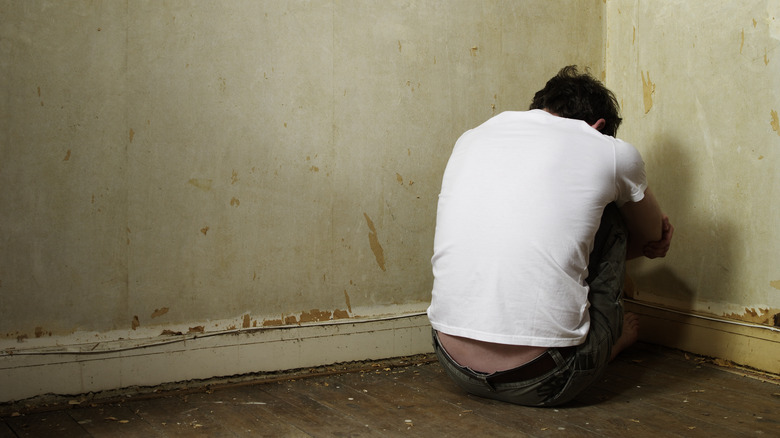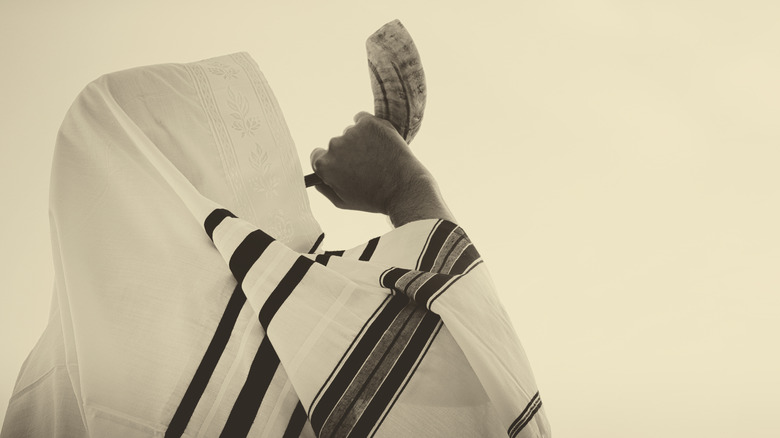The Soul-Cleaving Dybbuk Of 16th Century Jewish Folklore
Folklore is rich with tales of spirits existing in the nonphysical realm, and some of the more chilling stories involve roaming specters that can inhabit the human body. One of the more interesting spirits originates in Jewish folklore, and it involves the "dybbuk," a different kind of spirit that is not easily defined. The dybbuk, while not a demon or a fallen angel, is still considered an evil spirit that seeks to find a human vessel (via New World Encyclopedia).
The word dybbuk first made its way into Jewish literature in the 17th century. According to the Jewish Virtual Library, dybbuk has roots in two phrases: dibbuk me-ru'aḥ ra'ah, meaning "a cleavage of an evil spirit," and dibbuk min ḥa-hiẓonim, which translates to "dibbuk from the outside." Possession by a soul-cleaving dybbuk usually resulted in the victim suffering from some type of nervous disorder of mental illness, per Britannica.
Dybbuks were spirits unable to move on
Dybbuks were believed to be spirits of the dead who, for whatever reasons, were unable to move on (via Learn Religions). Some beliefs about dybbuks claim that the wary spirits belonged to sinners who wanted to escape judgment by entering another human. Other theories explain that dybbuks are dead souls seeking revenge, and others possessed bodies in hopes that a rabbi could help them find peace. In some cases, an individual may or may not know that he or she is even possessed, per Pantheon.
Folklore reveals that dybbuks were especially dangerous because they could take control of a person's body, according to The JC. Women were often believed to be victims of dybbuk possession more than men, and some people who were supposedly possessed by a dybbuk were even accused of being witches. But more than seeking out women, a dybbuk targeted those who suffered from mental disorders, such as severe depression and psychosis (via New World Encyclopedia).
Exorcizing a dybbuk was complicated
The only way to rid an individual of the dybbuk was through exorcism by a rabbi. Some lore suggests that the exorcism needed to be performed in the presence of one rabbi and nine other Jewish adults, per Learn Religions. One important aspect of an exorcism was to surprise the spirit, which was usually done by a rabbi blowing a trumpet made of a ram's horn. Creating some sort of dialog with the dybbuk was important as it helped the rabbi learn its purpose, according to New World Encyclopedia.
During an exorcism, the rabbi needed to learn the dybbuk's name as well as the sins it had committed before working out "acceptable terms" for it to leave the body of the possessed. The idea was to relieve not only the victim but the dybbuk as well, reports Jewish Ideas Daily. Oddly enough, the safest place a dybbuk could leave the body was between the big toe and the nail, reports The JC.


